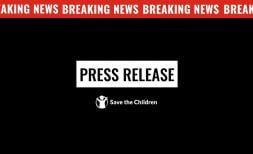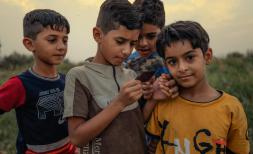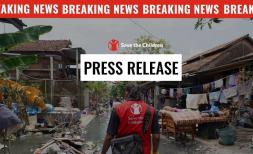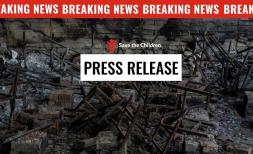Maternal health: Nearly one in five children born in 2024 will enter the world without medical care, putting them and mothers at risk
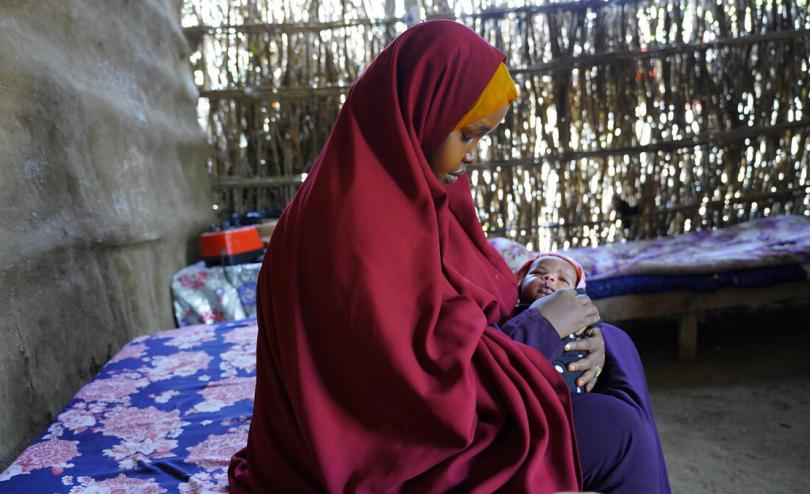
Rahma* who was able to deliver her baby Ahmed* safely in a hospital in Somalia. Photo by Save the Children. More content available here
Content available here
GLOBAL, FRIDAY 3 MAY 2024 – Nearly one in five children (17.9%) born this year will enter the world without a doctor, midwife or nurse present, putting them and their mothers in danger, as conflict and climate change place critical maternal health services out of reach, Save the Children saidi.
New analysis by the child rights organisation also found that more than a fifth of births (22.2%) will take place outside a health facility [1], with this figure rising to nearly half in conflict zones. The briefing, Silent Emergency: Women Dying, to Give Life estimates that 24 million mothers will give birth without a doctor, midwife or nurse, and 28 million will give birth outside a health facility.
A rise in conflict, climate-related disasters and humanitarian emergencies as well as the looming threat of pushback against reproductive health and human rights are putting the brakes on progress towards a world where childbirth is no longer a deadly threat for millions of women, Save the Children said.
Somalia is grappling with the devastating impact of the climate crisis and is one of the world’s 10 worst conflict-affected countries for children. Across the country, only 31.9% of women give birth with a doctor, midwife or nurse present - the lowest rate of skilled birth attendance in the world.
Rahma*, 32, recently gave birth in the Beledweyne hospital, supported by Save the Children and the Damal Caafimaad Project [2]. She said her previous home births were traumatic. She said: “When I gave birth to my last child at home, it was tough. I couldn't find a professional nurse and I had a lot of bleeding. It was a dangerous situation - I almost died.”
After such a difficult childbirth at home, she was able to have her next child in the hospital under the care of the midwifery team. “After a few hours of hard labour, I gave birth to a healthy baby boy, called Ahmed*. They took good care of both of us right after the birth and before I left the hospital, I talked to a nurse about breastfeeding and the support I could get.”
Climate change is increasing the frequency and severity of extreme heat and wildfires, which are associated with heightened risks of preterm birth, stillbirths and pregnancy complications, Save the Children said.
With global conflict increasing year on year, the analysis found that pregnant mothers in warzones are three times more likely to give birth without a doctor, midwife or nurse. Analysis also found almost half of births (44%) in conflict zones take place outside a health facility compared to 15% of births elsewhere.
Nowhere has the devastating impact of conflict been more evident than in Gaza, where six months of constant bombardment, siege and obstruction of aid deliveries have annihilated the health system. Recent analysis by Save the Children found that at least 435 attacks on health facilities or personnel between 7 October 2023 and early April 2024 – equivalent to 73 attacks per month of war [3].
Action on maternal health worldwide was advancing a decade ago, but progress to achieve the UN goal of 70 deaths per 100,000 births globally by 2030 is now stalling [4]. Research from the World Health Organisation last year found that a woman dies from complications due to childbirth or pregnancy every two minutes.
Governments must protect the lives of women and children through strong primary health care, comprehensive sexual and reproductive services and education, underpinned by effective, sustainable financing, Save the Children said. Leaders must also stand firm against rolling back progress on sexual and reproductive health and human rights.
Marionka Pohl, Global Head of Health Policy and Advocacy at Save the Children, said:
“In both conflict zones and climate change hotspots, children suffer first and worst – even from the moment they take their first breaths. Mothers and babies in these contexts are more likely to be in danger – leading to more children growing up without a mother and more mothers going through the distress of losing their newborns.
“All women, even in the most remote and dangerous areas of the world, should have access to medical care, and equipment, as well as the right to access reproductive services and education. It is critical that we act now – if we drop the ball on the progress we’ve made over the past few decades it is women and children who will pay the price.”
ENDS
Content available here
*Names have been changed
NOTES
[1] The World Bank defines a health facility as: A physical structure, varying from a large complex of buildings to a single room in a house, from which health services are offered by a doctor, nurse, or midwife.
[2] Supported by the Damal Caafimaad Project, Save the Children reopened the Beledweyne hospital in October 2023, which had not been fully operational for over a decade. Contributing to reducing the number of mothers and babies dying, the hospital’s maternal health services - including antenatal care, postnatal care, and carrying out caesarean sections - has helped over 15,000 patients.
[3] Save the Children’s Emergency Health Unit has established maternal health services in Al Mawasi to provide emergency obstetric care for women to deliver safely, supported by skilled midwives who can see 100 patients a day, including the provision of antenatal care and postnatal care services.
[4] The global MMR had already fallen from 339 maternal deaths per 100 000 live births to 227 by 2015, but has remained at 223 between 2016 and 2020. https://iris.who.int/bitstream/handle/10665/366225/9789240068759-eng.pdf?sequence=1
Methodology
The figures are calculations done by Save the Children UK’s research and data hub using publicly available demographic and health statistics. We use the latest available data points on births attended by a skilled health professional (%) and births in a health facility (%) from UNICEF Data. Projections on total new births in 2024 is taken from World Population Prospects - Population Division - United Nations. The analysis was performed using country-specific estimates from UNICEF of skilled birth attendance and births in health facilities, which were then aggregated to a global level. However, as a consequence, global numbers may vary slightly between our estimates and other published estimates. Countries affected by conflict are identified by the World Bank classification for Fragile and Conflict-Affected Situations for the current financial year. All figures are expressed in millions.
For further enquiries please contact:
Emily Wight, Emily.Wight@savethechildren.org;
Our media out of hours (BST) contact is media@savethechildren.org.uk / +44(0)7831 650409
Please also check our Twitter account @Save_GlobalNews for news alerts, quotes, statements and location Vlogs.

